Chinese Sauces // Everything You Need to Know
If you’re a fan of Chinese cuisine, you’re probably familiar with the wide variety of sauces that are used to add flavor and complexity to dishes.

Or maybe you’ve just found yourself staring in confusion at all the Chinese sauces in an Asian grocery store.
Either way, this is the perfect blog for you!
In this blog post, we’ll explore some of the most popular types of Chinese sauces, including soy sauce, hoisin sauce, oyster sauce, and more.
From sweet and tangy to rich and savory, Chinese sauces are a crucial component of many dishes, and can completely transform the taste of a meal.
Whether you’re an experienced home cook or simply looking to broaden your culinary horizons, this guide to Chinese sauces is sure to offer plenty of inspiration for your next meal.
Chinese Sauces – Six Common Condiments
Chinese Sauces – Bean Pastes/Condiments
Chinese Sauces – Chilli Sauces/Oil
Chinese Sauces – Soy Sauce
Chinese Sauces – Vinegar
Chinese Sauces – Infused Oil
Chinese Sauces – Cooking Wines
Chinese Sauces – Less Common Condiments



Chinese Sauces – Six Common Condiments
Hoisin sauce 海鲜酱 hǎixiānjiàng
Up first on our list of Chinese sauces is of course hoisin sauce.
If you’ve ever eaten Beijing duck then you should already be familiar it because it is named as the condiment used in delicious Beijing duck pancakes.
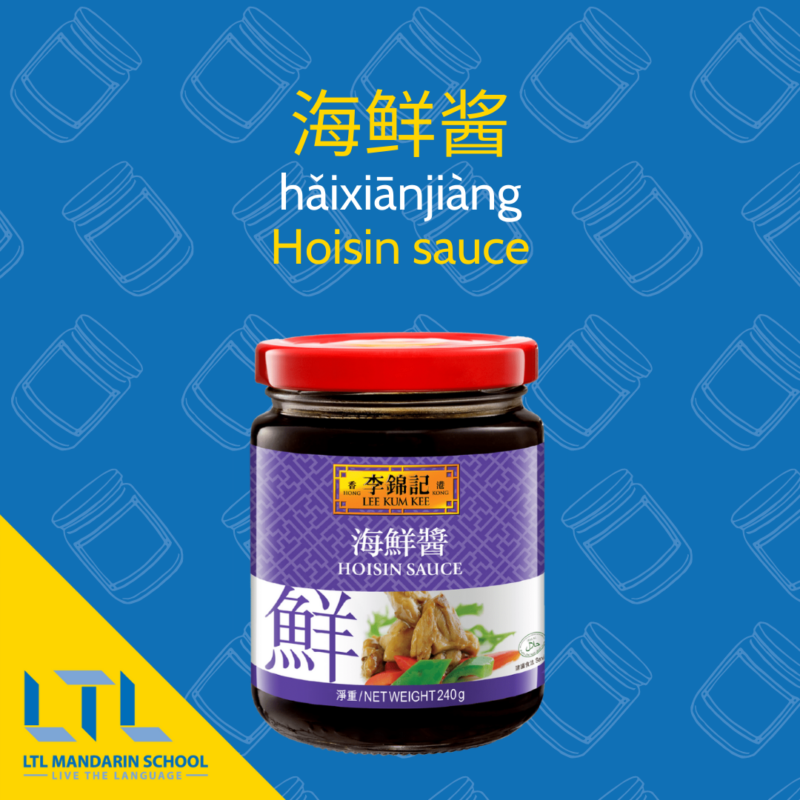
For those who’ve not had it before this is really the number one must try Chinese dish.
But prepare to have your mind blown🤯!
Traditionally it actually isn’t hoisin sauce that’s normally used!
Actually a similar sauce called sweet bean paste, is used which we’ll talk more about later. This is often translated into English as hoisin sauce but is actually a different condiment.
However, in many Chinese restaurants in the west they will often use hoisin sauce because the two condiments are very similar in flavour.
The Chinese name for the sauce literally translates to “seafood” (海鲜 hǎixiān) “sauce” (酱 jiàng), however the sauce doesn’t contain any seafood ingredients and isn’t commonly eaten with seafood 🤷♀️.
Instead, the main ingredient of hoisin sauce is fermented soybeans mixed with garlic, chilli, sesame, Chinese spices and vinegar. Depending on the recipe there are various other ingredients that can be added.
So how is hoisin sauce used?
It is commonly used as a marinade for meat, in stir fry dishes, in noodle dishes or as a dipping sauce. You’ll most often see hoisin sauce being used in Cantonese cooking (one the eight Chinese cuisines).
Some common dishes that use hoisin sauce are:
- Char siu 叉烧chāshāo (Cantonese style of barbecued pork)
- Kung pao chicken 宫保鸡丁 gōng bǎo jī dīng
- Chow mein 炒面 chǎomiàn (fried noodles)
- Fried rice 炒饭 chǎofàn
Oyster sauce 蚝油 háoyóu
Unlike hoisin sauce, the name for oyster sauce actually makes sense!
It translates to “oyster” (蚝 háo) “oil” (油 yóu) and is actually made from oysters as the name suggests. However, although it’s made from boiled oysters, it doesn’t actually taste like oyster, how strange is that!
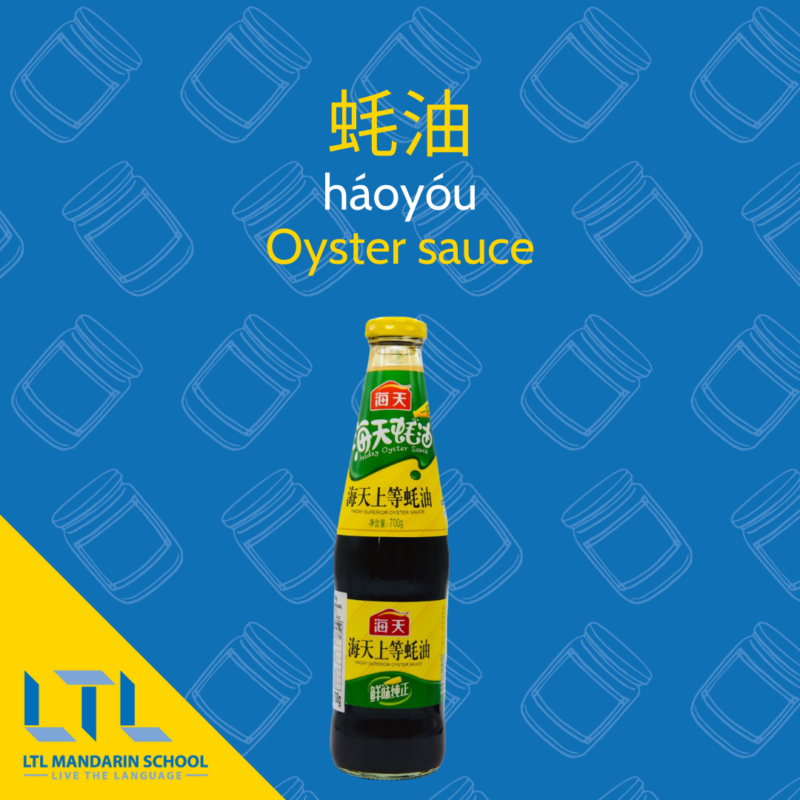
This is very different from Thai fish sauce that has a distinctly strong, fishy taste and odour.
Which means the two can’t be substituted for each other despite the similar sounding names.
Along with oysters it also normally includes soy sauce, water, sugar, garlic and wheat flour for thickening.
For those vegetarians out there, don’t worry there is also a vegetarian oyster sauce available made from mushrooms instead.
Originally oyster sauce was mainly used in Cantonese cooking. However, it has now become a popular sauce used in most of the Chinese cuisines. This is because it said to bring good “umami” flavour to dishes.
For those who don’t know “umami” is loanword from Japanese meaning good flavour or good taste. It refers to the “savouriness” of a dish and in Chinese is called 鲜味 xiānwèi which literally means “fresh flavour”.
Nowadays oyster sauce is added to a lot of Chinese dishes such as stir fry, braised dishes or used in marinades so it’s very versatile.
It immediately adds a savoury, Chinese flavour to a dish so should be one of the essential Chinese sauces to have in your kitchen cupboard.

10 Must Try Shanghainese Foods 🍜 Your Complete Guide
Chinese food is so diverse that it’s really difficult to say what’s best, so we’ve diluted it down. Here are the top 10 best Shanghainese food dishes.
Sha cha sauce 沙茶酱 shā chá jiàng
Sha cha sauce is a slightly spicy, savoury sauce that is used in Fujian, Teochew (Chaozhou 潮州 cháozhōu) and Taiwanese cuisine.
The name translates to “sand” (沙 shā) “tea” (茶 chá) sauce, but contains no flavours or ingredients involving tea.
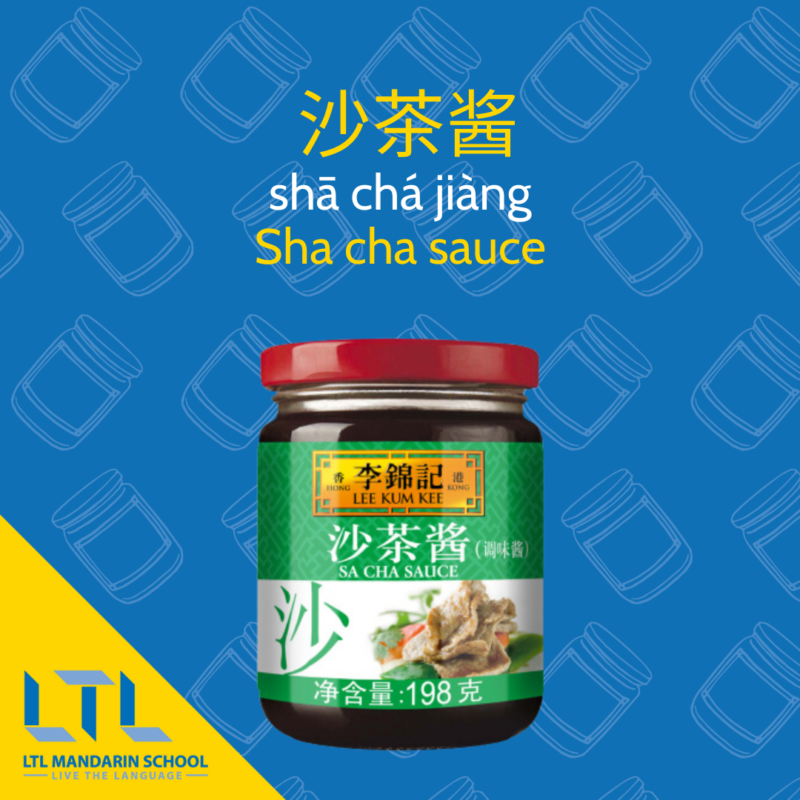
It is actually thought that the origins of sha cha sauce and its name could have come from the Malaysian and Indonesian satay sauce because in Hokkien it is called “sa-te” sauce. However, sha cha sauce is very different to the peanut based satay sauce.
In contrast to satay sauce, sha cha sauce has no peanuts to speak of and is made from soybean oil, garlic, shallots, chillis, Chinese brill (a type of flatfish), and dried shrimp.
Sha cha sauce is often translated as “Chinese BBQ sauce”, but it really bares little resemblance to American BBQ sauce.
This association might come from the fact that is often used as a rub for roast meats. It is commonly used as dipping sauce for hot pot, as well as in soups and stir fries.
Like oyster sauce sha cha sauce is also though to add “umami” to dishes.
Char siu sauce 叉烧酱 chāshāo jiàng
As we saw earlier hoisin sauce is used to make char siu, however there is also specifically a char siu sauce that exists.
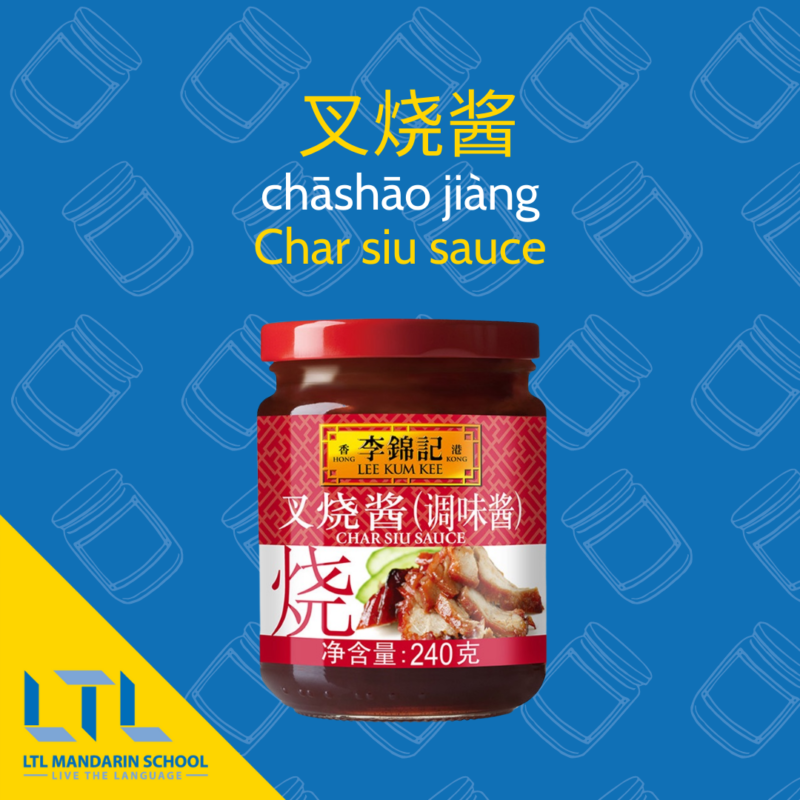
It is commonly known as “Chinese BBQ sauce” and unlike sha cha sauce which is also attributed this name, this is much more similar.
When it comes to Chinese sauces you can think of a jar of char siu sauce as a short-cut or ready made sauce.
Similar to how you might have a ready made pasta sauce in the West.
It is made up of hoisin sauce, sugar, Chinese five spice powder, Chinese cooking wine, soy sauce, garlic and often also food colouring.
You can either buy this sauce ready made or make it from scratch using the above ingredients.
This “BBQ sauce” is of course used to make char siu (叉燒 chāshāo) which is Cantonese style barbecued pork, this is normally served in one of the following ways:
- 叉烧包 chāshāo bāo – in a steamed bun (typically served at dim sum)
- 叉烧面 chāshāo miàn – with noodles
- 叉烧饭 chāshāo fàn – with rice
Another popular use of char siu sauce is as a marinade for chicken, it can be especially good to make Chinese style chicken wings with.
Sweet bean sauce 甜面酱 tiánmiànjiàng
Next up on our list we what we have the surprise REAL Beijing duck condiment: sweet bean sauce.
Although translated into English as sweet bean sauce, this condiment usually doesn’t have any beans in it and the word bean (豆 dòu) is also not in the Chinese name!
The Chinese name of this sauce actually translates to “sweet flour paste”.
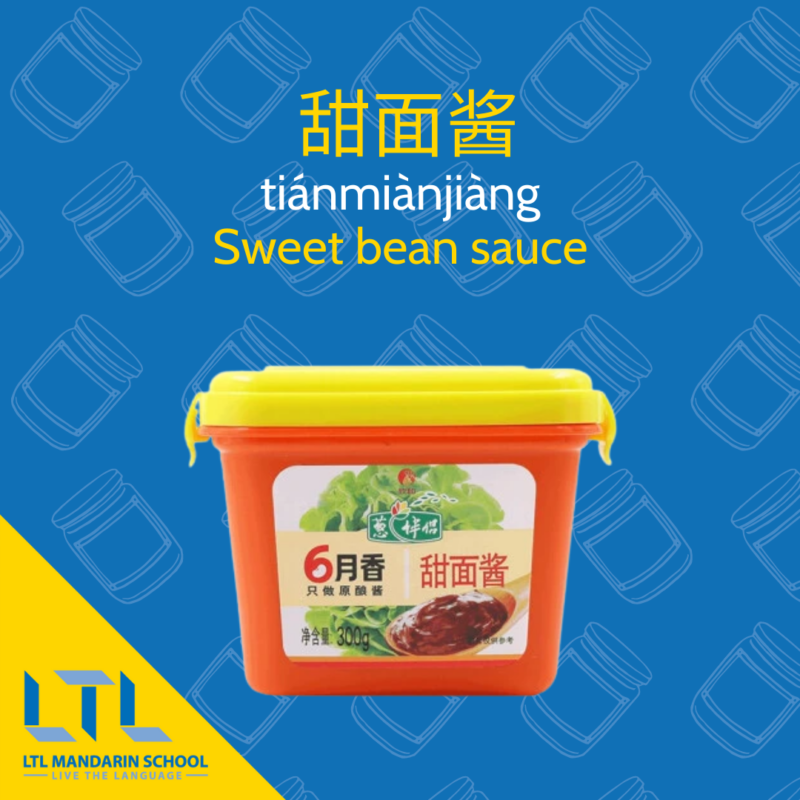
To make matters even more confusing, as we mentioned earlier, this sauce is also sometimes translated as hoisin sauce even though it’s a different condiment.
Many Chinese restaurants will combine sweet bean sauce with some other flavourings to make their own unique “duck sauce”.
So if sweet bean paste isn’t made from beans, what is it made from?!
The clue here is in the Chinese name; it’s made from from wheat flour, sugar and salt. Sometimes fermented soybeans are added, however this isn’t a key ingredient so the English name still remains a bit of a mystery.
As you might guess from the name this sauce is sweet in flavour, although it’s also a bit salty and can add umami to dishes as well.
Here are some common dishes that use sweet bean paste:
- Beijing duck 北京烤鸭 běijīng kǎoyā
- Jianbing 煎饼 jiānbǐng (a Chinese breakfast pancake)
Sesame paste 芝麻酱 zhīmajiàng
Chinese sesame paste is made from toasted white sesame seeds. This makes it different from tahini which is made with from raw sesame seeds and normally also has the addition of olive oil.
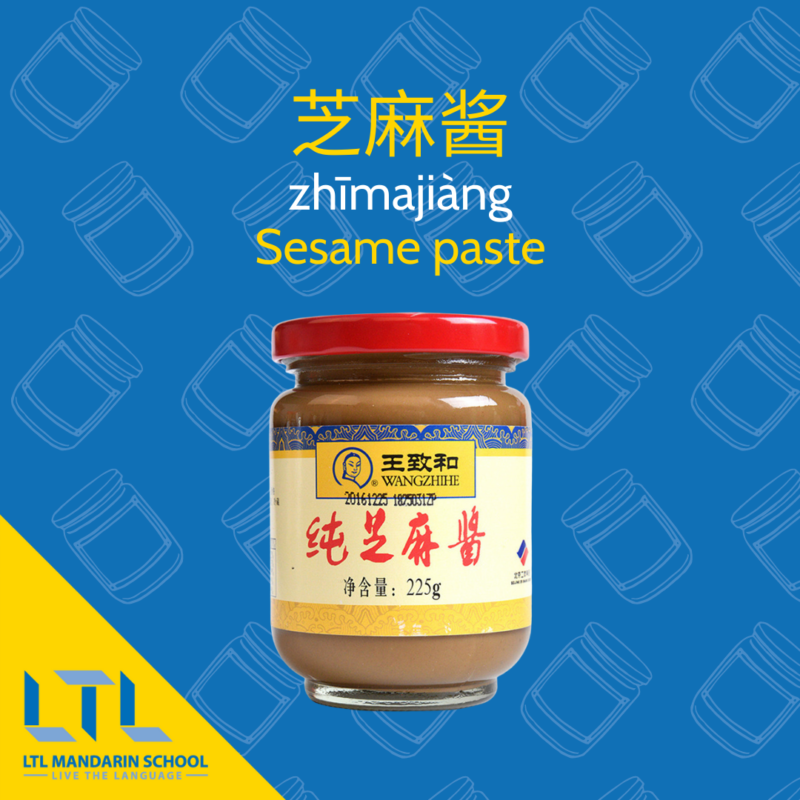
As Chinese sesame paste is made from toasted sesame seeds it has a much stronger, nuttier flavour than tahini and a darker appearance.
However, if needed tahini can be substituted the dish just won’t have as strong a sesame flavour.
Sesame paste is commonly used in sauces for cold noodle dishes such as majiang cold skin noodles (麻酱凉皮 májiàng liángpí).
It’s also often used as a dipping sauce for hotpot (火锅 huǒguō) or malatang (麻辣烫 málà tàng).
Unlike most of the other Chinese sauces we’ll be looking at, sesame paste is also used in a variety of baked goods and desserts.
Chinese Sauces – Bean Pastes/Condiments
For a westerner the name “bean paste” may sound a little off putting when you first hear it, but these are actually some of the most essential Chinese sauces.
In fact, these aren’t just limited to China with many Asian countries such as Japan and Korea also using a range of bean pastes in their cooking as well.
So let’s have a look at some of the most common bean pastes that you’ll find in China!
Bean paste 豆瓣酱 dòubàn jiàng
Now, the first bean paste we’ll be looking at can be a little confusing because it can actually refer to two different condiments depending on which part of China you are.
In Sichuan bean paste 豆瓣酱 dòubàn jiàng is a spicy bean paste made from fermented broad beans, chilli peppers, soybeans, salt and flour.
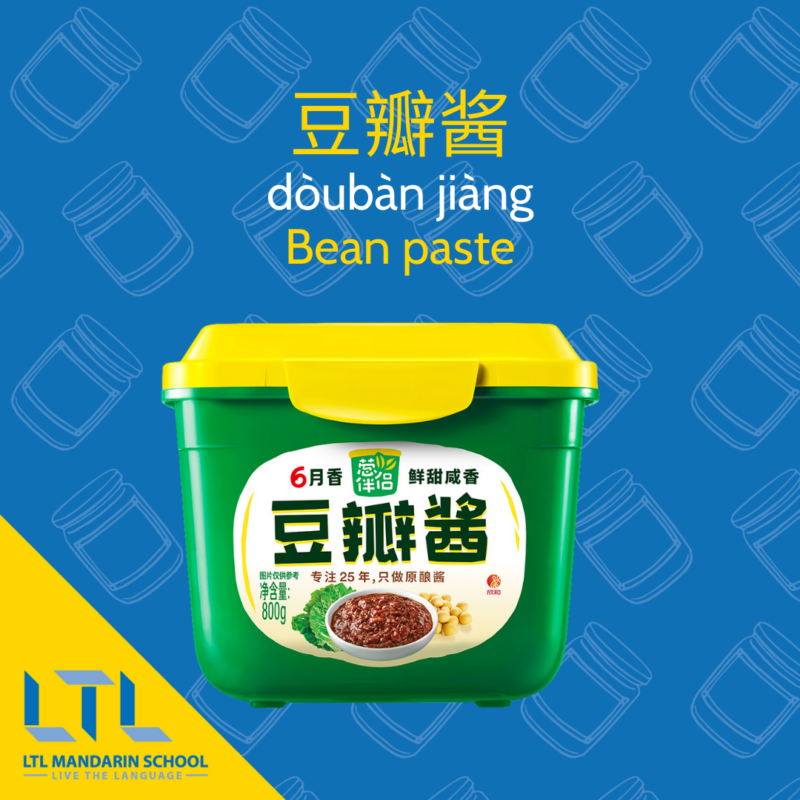
It is a staple in Sichuan cooking (another one of the eight Chinese cuisines) and has been called “the soul of Sichuan cuisine.”
Some of the most common dishes that call on the use of 豆瓣酱 dòubàn jiàng are:
- Twice cooked pork 回锅肉 huíguōròu
- Mapo tofu 麻婆豆腐 má pó dòufu
- Fish scented aubergine 鱼香茄子 yú xiāng qiézi
- Hot pot 火锅 huǒguō
- Shanghai spicy noodles 上海辣酱面 shànghǎi làjiàng miàn
However, in many parts of China 豆瓣酱 dòubànjiàng can also refer to a savoury non spicy bean paste, so it can get a little confusing when shopping!
The non spicy version can be used in the same dishes, but of course they won’t have that signature Sichuan spicy punch.
Unfortunately that isn’t the last of the confusion 😵…
In Southern China, Taiwan and Hong Kong 豆瓣酱 dòubàn jiàng actually refers to a sweet bean paste which is very similar in flavour and usage to the paste we’ll be talking about next: sweet bean paste.
In these regions they add spicy (辣 là) to the name of the spicy bean paste to differentiate it, calling it 辣豆瓣酱 làdòubàn jiàng.
Yellow soybean paste 黄豆酱 huángdòu jiàng
Next on our list of bean pastes we have yellow soybean paste.
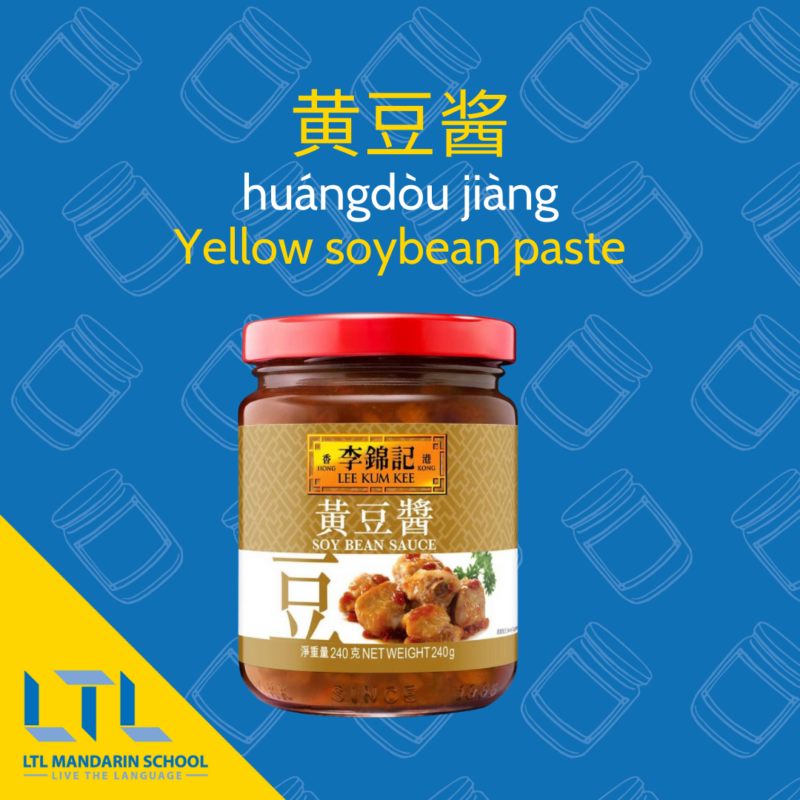
No surprises here, this paste is actually made form yellow soybeans, salt and water, sometimes wheat flour is also added.
The beans used are actually the leftover beans from making soy sauce, so you may see the sauce referred to as “ground bean sauce”.
You may also see it called “brown bean sauce” as the sauce is actually more brown in colour than yellow.
It’s very common to see different translations of the same Chinese sauces so it’s best to have a look at the ingredients if you’re in doubt!
In China the name of this paste will often be shortened simply to 黄酱 huáng jiàng “yellow paste”. There is also a spicy version available called 辣黄豆酱 là huángdòu jiàng.
This is a popular condiment used in northern cuisine, especially Beijing cuisine.
The most famous dish that it is used in is Zha jiang noodles (炸酱面 zhájiàngmiàn) a popular Beijing noodle dish.

Beijing vs Shanghai (2025) // Your Comprehensive & Complete Guide
Beijing vs Shanghai — they couldn’t be more similar, and they couldn’t be more different. But which one is for you? Find out first with our in-depth guide.
Fermented bean curd 腐乳 fǔrǔ
Fermented bean curd, also known as fermented tofu, bean cheese or tofu cheese is made from preserving fresh bean curd with rice wine.
There are two varieties of this Chinese condiment, the white kind (白腐乳 bái fúrú) and the red kind (红腐乳 hóng fǔrǔ).
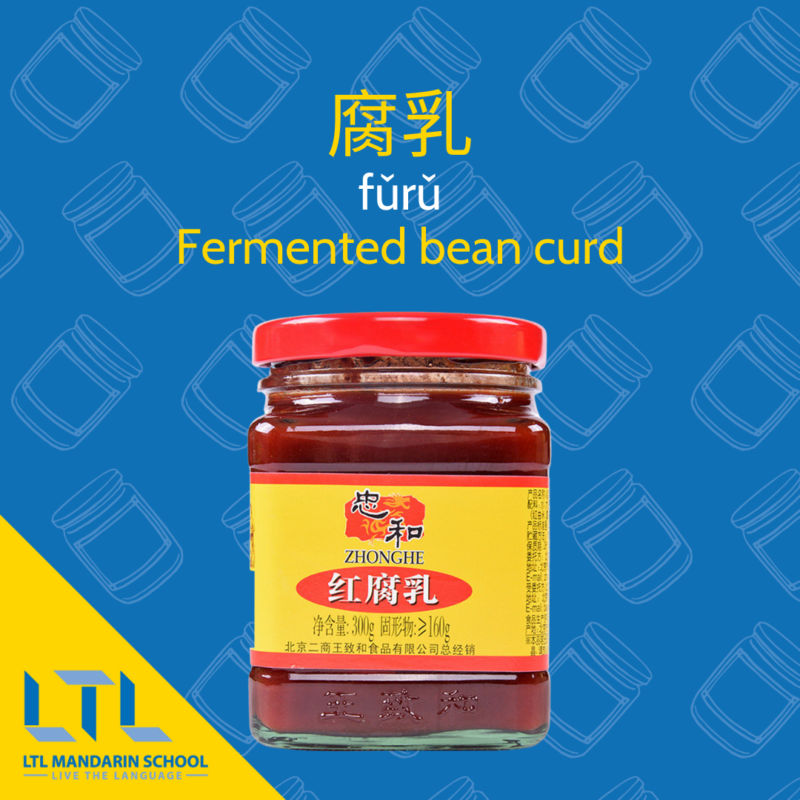
Now, this may look like one of the least appealing Chinese sauces on our list, however it really is packed with flavour. It has a salty, very slightly sweet flavour and some say an almost cheesy flavour.
Red bean curd is often used as a marinade for meat, whereas white bean curd is often used to cook stir-fried leafy vegetables.
Both bean curds are also eaten as a condiment with congee (Chinese rice porridge).
Chinese Sauces – Chilli Sauces/Oil
If you’ve ever been to a local Chinese restaurant (饭馆儿 fànguǎnr) in China then it’s almost guaranteed that there will be a pot of chilli sauce on the table.
Chinese chilli sauce (辣椒酱 làjiāojiàng) is also often referred to as chilli oil (辣椒油 làjiāo yóu) in English.
辣椒油 làjiāo yóu can refer to both a chilli oil type sauce as well as chilli infused oil which we’ll be talking about later.
In Chinese there are multiple different names and varieties of chilli sauce/oil. Many regions have their own specific type of chilli sauce so let’s have a look at some of the most common.
Fried chilli oil 油辣椒 yóu làjiāo
This popular type of Chinese chilli sauce is a Guizhou-style chilli oil. The main distinguishing feature of this condiment is that it’s made from fried bits of ground chilli and other crispy bits like garlic, onion, soy beans etc.
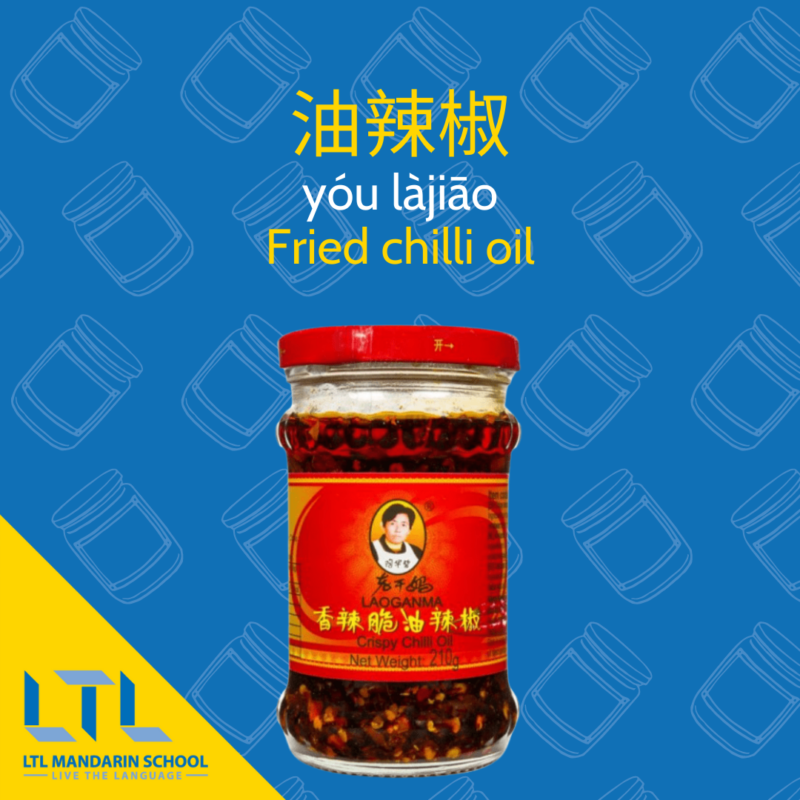
This kind of chilli oil is around 90% “crisp” and 10% oil.
It is popular to use in stir fries, soups as a dressing for cold dishes and as a dipping sauce.
The most famous brand of this chilli oil is Lao Gan Ma (老干妈 lǎo gàn mā). This translates to “Old Godmother” and many people joke that the founder of the company Tao Huabi (陶华碧 táo huábì) featured on the jar is the godmother of lazy Chinese cooking.
Lao Gan Ma is viewed by some people as a type of chilli sauce in its own right, even though technically it is a brand.
However, one thing that is certainly true is that it’s an essential condiment in most Chinese kitchens.
Nowadays, there are a few different variations of Lao Gan Ma fried chilli oil and the company has also branched out into some different condiments as well such as fermented bean curd.
But, their original, and often stated as their best sauce is the Lao Gan Ma Black Bean Chilli Sauce (老干妈风味豆豉油制辣椒 lǎo gàn mā fēngwèi dòuchǐ yóu zhì làjiāo).
Sichuan chilli sauce 川味红油 chuān wèi hóng yóu
Next up we have Sichuan chilli oil. You of course can’t talk about chilli sauces without mentioning the king of spice Sichuan!
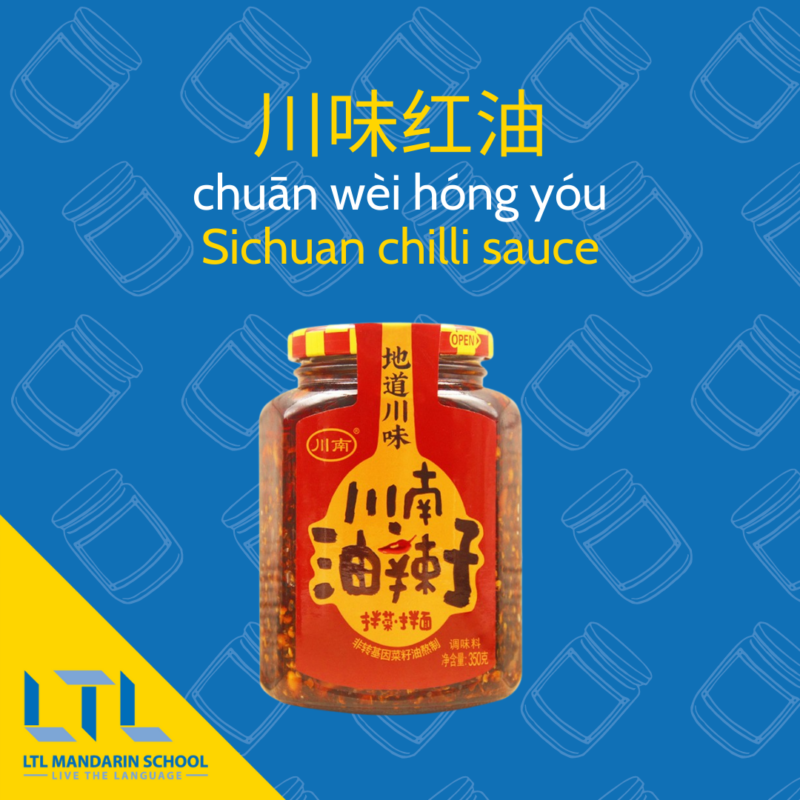
For anyone familiar with Sichuan cuisines you won’t be surprised to hear that Sichuan peppercorns (花椒 huājiāo “flower pepper”) are a key feature in this sauce.
It also differs from fried chilli oil because it has a higher ratio of oil to solids being about 70% solids and 30% oil.
Two popular Sichuanese dishes featuring this sauce are spicy wontons 红油抄手 hóng yóu chāoshǒu and dan dan noodles 担担面 dàndàn miàn.
As you’ll see with most Chinese chilli sauces, this is a popular condiment for a variety of cold dishes (凉菜 liángcài).
Chopped chilli sauce 剁辣椒酱 duò làjiāo jiàng
Hailing from Hunan we have chopped chilli sauce. The word 剁 duò literally means “chop” so its name is pretty self explanatory. Often you’ll also see the name shortened to simply 剁椒 duò jiāo meaning “chopped peppers”.
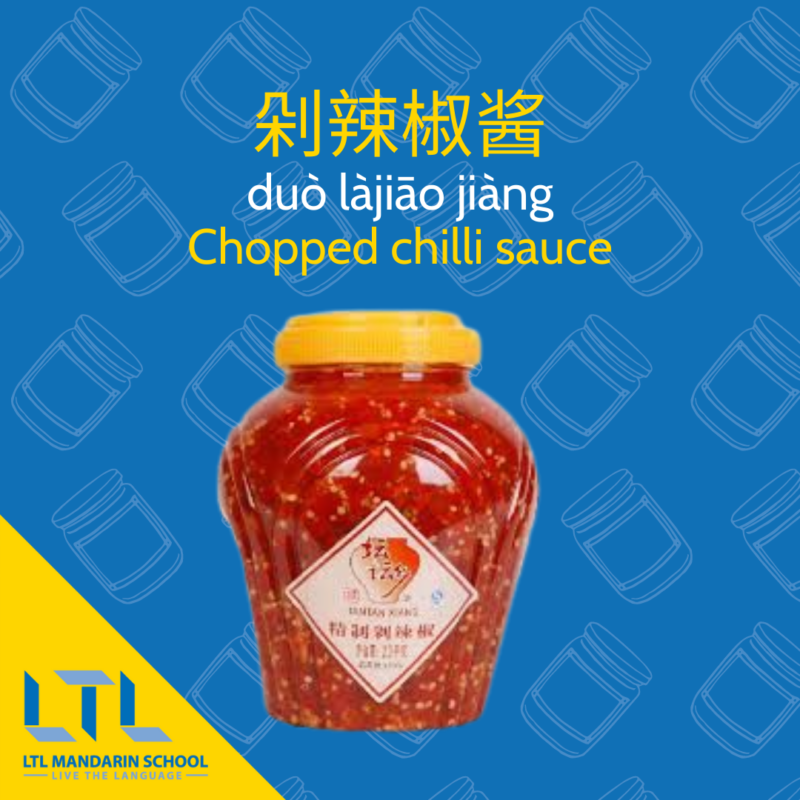
Unlike the previous two chilli sauces this one is made from fresh chopped red chillies which are then pickled in a brine solution.
Usually garlic and ginger are also added to the chillies. The resulting flavour is a salty, sour, pickled taste.
Although this chilli sauce looks like it’s going to be really spicy with the bright red cut up chillies, it’s actually a lot milder than you think.
In general it’s normally less spicy than fried chilli sauce or Sichuan chilli sauce, so is a good option for those who can’t handle spice too well!
As you’d expect this chilli sauce is used in a lot of Hunan cuisine. One of the most popular dishes it’s used in is Hunan steamed fish head 剁椒鱼头 duòjiāo yútóu.
There are also varieties available that are made with green peppers, however due to the pickling process these will often appear yellow in colour instead.
Chinese Sauces – Soy Sauce
Now we are moving onto one of the most important types of Chinese sauces: soy sauce or 酱油 jiàngyóu as it’s called in Chinese.
The Chinese name literally translates to “sauce” 酱 jiàng “oil” 油 yóu.
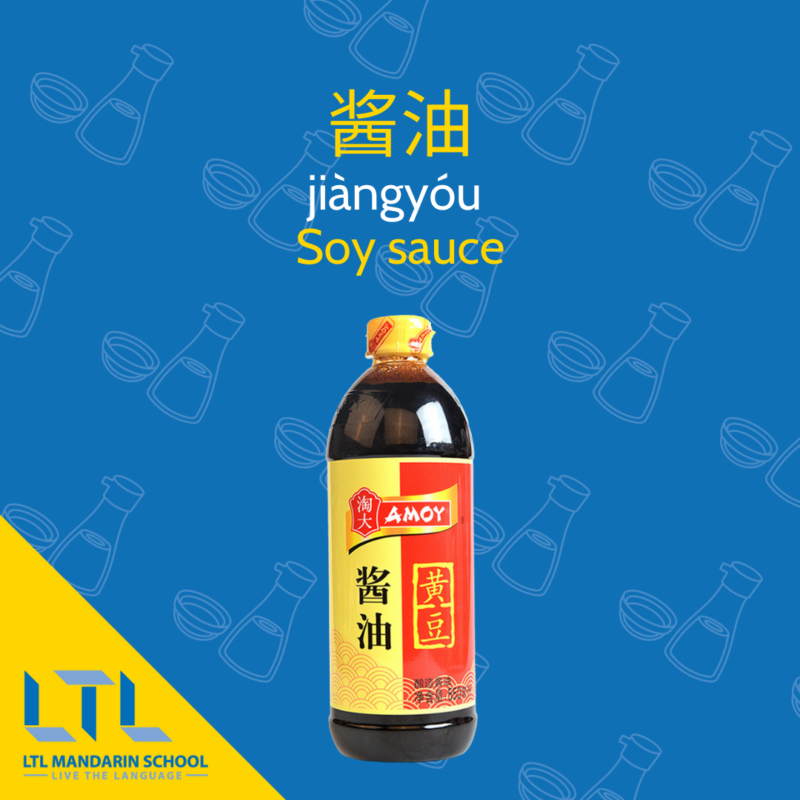
In case you don’t already know soy sauce is made from soy beans (hence the name), wheat and wheat bran.
It has a delicious mildly salty flavour and is a popular condiment in not just China but many other Asian countries such as Japan where it’s a common dipping sauce for sushi.
It’s important to note that the specific flavours and uses of soy sauce do differ according to the type of soy sauce you buy.
For example if you buy a Japanese soy sauce meant to accompany sushi, it’s going to have a different flavour to a Chinese soy sauce.
To put it simply if you’re cooking Chinese food you should use a Chinese soy sauce. However, if needed you can use a different type but be mindful that this may change the flavour of the dish slightly.
We’re going to be having a look at some of the most common varieties of Chinese soy sauce and most importantly explaining the difference between light soy sauce and dark soy sauce.
TOP TIP | If in doubt use light soy sauce.
Light soy sauce 生抽 shēngchōu
First up is light soy sauce, which you can also refer to as “regular soy sauce” because when a recipe is calling for soy sauce this is the one they’ll be referring to.
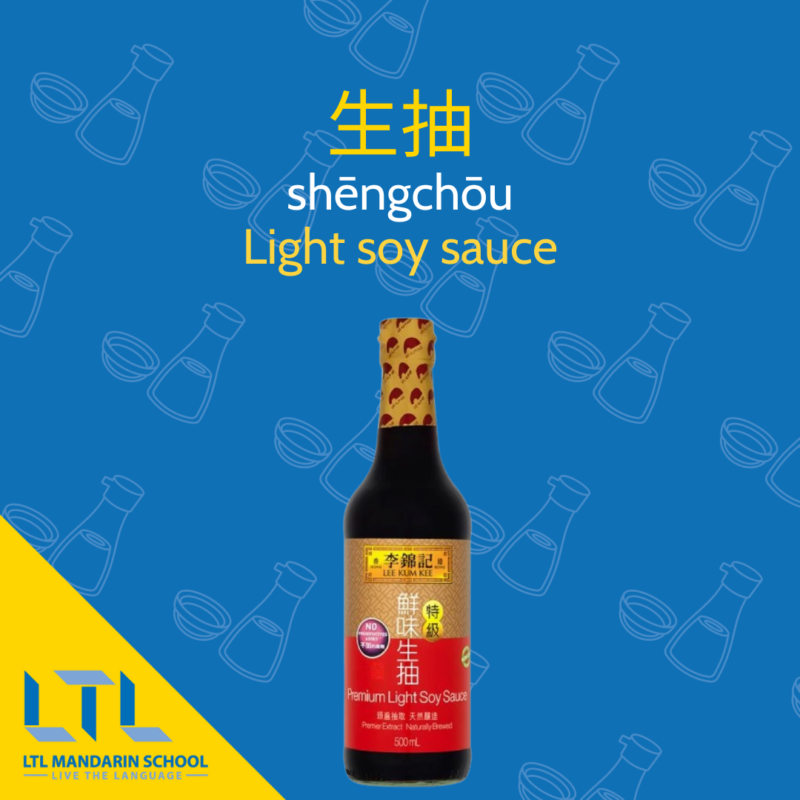
To make matters a bit confusing often light soy sauce won’t be labelled as “light”, however generally speaking if it doesn’t say “dark” or “sweet” etc. on the bottle it’ll actually be light soy sauce.
Light soy sauce is normally lighter (as you might guess from the name) and thinner than dark soy sauce, though this can vary brand to brand.
It is used to add flavour to dishes and if you’re cooking Chinese food then this is the type of soy sauce you want stocked in your kitchen.
It is most commonly used in stir fries, noodle dishes, as a dipping sauce and as a dressing for cold dishes.
Dark soy sauce 老抽 lǎochōu
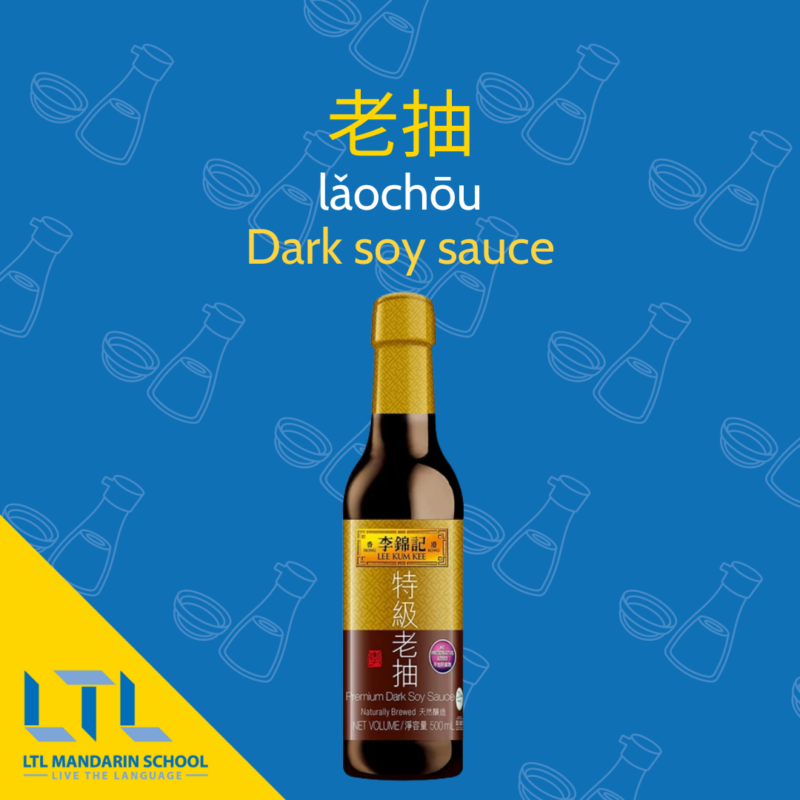
Now dark soy sauce as we’ve already said is normally darker in colour, thicker and also sweeter than light soy sauce.
Rather than primarily being used to add flavour to a dish, dark soy sauce is used to add a dark colour to a dish.
It is commonly used in marinades, braised dishes or to achieve a darker colour in noodle and fried rice dishes.
Reduced salt soy sauce 减盐酱油 jiǎn yán jiàngyóu
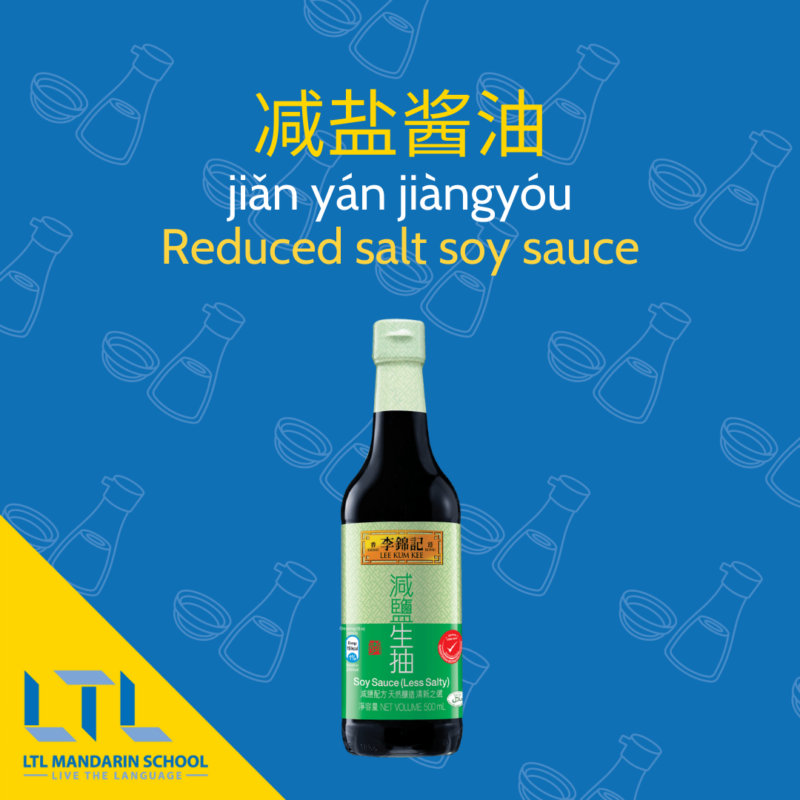
As the world becomes ever more health conscious you will of course see more “healthy” variations of essential cooking ingredients becoming available and soy sauce is no exception.
Most supermarkets now sell a reduced salt soy sauce, which have generally about 40% less salt than standard soy sauce.
This is a great option if you’re worried about your salt intake, want an easy way to reduce the salt level in a dish or have more control over the salt level in a dish.
Reduced salt soy sauce can basically be used interchangeably to replace light soy sauce in a recipe.
Chinese Sauces – Vinegar
Following on from soy sauce we of course have to talk about another of the most important types of Chinese sauces: vinegar 醋 cù.
There are three main types of Chinese vinegar: black, red and white. However, there are also some further variations among these.
Black rice vinegar 香醋 xiāng cù
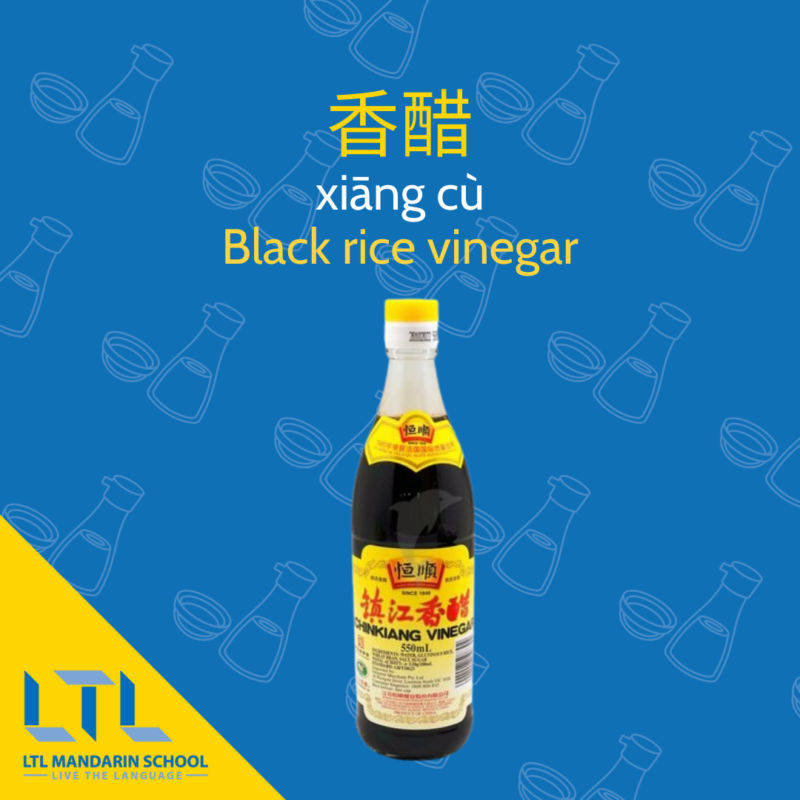
Firstly we have what is probably the most famous type of vinegar which is a black Chinese rice vinegar (米醋 mǐcù).
This type of vinegar originates from Zhenjiang (镇江 zhènjiāng) in Jiangsu Province (江苏省 jiāngsū shěng) so is also often referred to as Zhenjiang or Chinkiang vinegar (镇江香醋 zhènjiāng xiāngcù).
Generally this black vinegar is made from glutinous rice and it is the most common vinegar you’ll see outside of China.
In restaurants this will also be the most likely vinegar that you’ll find on the table to add to dishes.
It has a mildly acidic taste, but if you find the flavour too strong it can be mixed with soy sauce to make it a little less intense. It is used to braise meat and fish, in dressings for cold dishes, on noodles and of course as a dipping sauce for dumplings.
This should be the Chinese vinegar of choice to have as a staple in your kitchen.
Mature black vinegar 陈醋 chéncù

Now, this is also a type of black vinegar, however unlike the one we just looked at this isn’t a rice vinegar.
Instead, it’s made from sorghum, barley and peas.
This vinegar also hails from a different part of China: Shanxi Province (陕西省 shǎnxī shěng).
Along with not being made from rice, the other main difference between this and standard black vinegar is that it is aged for at least a year.
This makes it have a much stronger taste than Zhejiang black vinegar. If you’re a vinegar lover this may be the best choice for dipping sauces.
Dumpling vinegar 饺子醋 jiǎozi cù
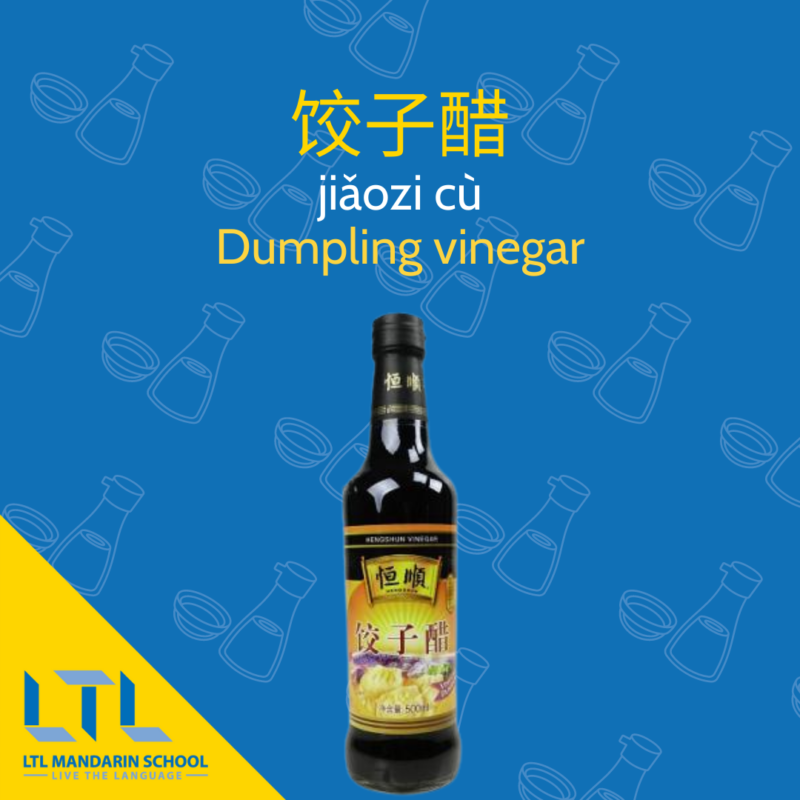
No surprises here, this is the perfect vinegar for dipping your dumplings in!
Now as we’ve already said any black vinegar is perfectly acceptable to use with dumplings.
But, if the main reason for buying vinegar is as a dipping sauce for dumplings then you can’t go wrong with this!
So what makes this vinegar different to the previous two?
Dumpling vinegar is normally mature vinegar with garlic and salt (sometimes this can also be soy sauce) added, some brands also add ginger.
The taste is less strong than mature vinegar and some brands may also use black vinegar instead. Basically dumpling vinegar can actually vary quite a lot!
White vinegar 白醋 báicù
Chinese white rice vinegar is made from fermented rice and varies in colour from clear to a pale yellow.
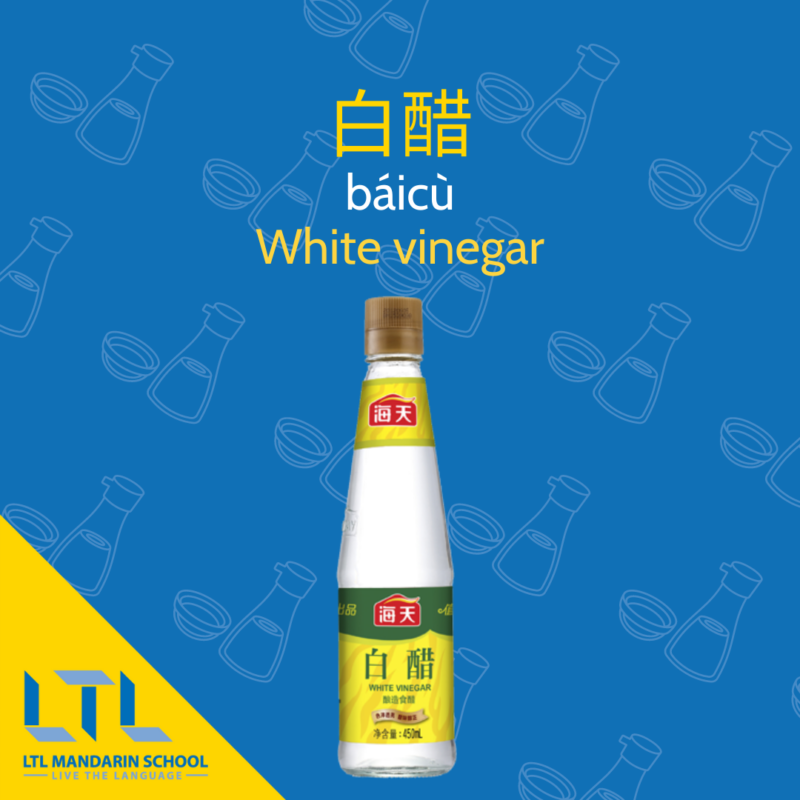
Of all the Chinese vinegars is the most similar to Western vinegars and also the most acidic. However, it is still more mild than Western vinegars.
As it’s made from fermenting rice wine further to make it into vinegar it’s also sometimes referred to as rice wine vinegar.
White vinegar is generally used when you want to make a dish sour but not affect the colouring of the dish. For example when making Chinese quick pickles (跳水泡菜 tiàoshuǐ pàocài).
Another very common dish where white vinegar is used is sour and spicy shredded potato (酸辣土豆丝 suān là tǔdòu sī).
Red vinegar 大红浙醋 dà hóng zhè cù

Red Chinese rice vinegar is made from red yeast rice (红曲米 hóng qū mǐ) which gives it a distinct red hue.
It originates from Zhejiang Province (浙江省 zhèjiāng shěng). Not to be confused with the city of Zhenjiang where the most common black vinegar hails from.
This is a very mild vinegar and is the least commonly used, mainly being used in Zhejiang cuisine.
Chinese Sauces – Infused Oil
Just like in the west where you can get various infused oils, like garlic infused olive oil, in China you also get infused oils. Here are three of the most common ones you’ll find.
Chilli oil 辣椒油 làjiāo yóu
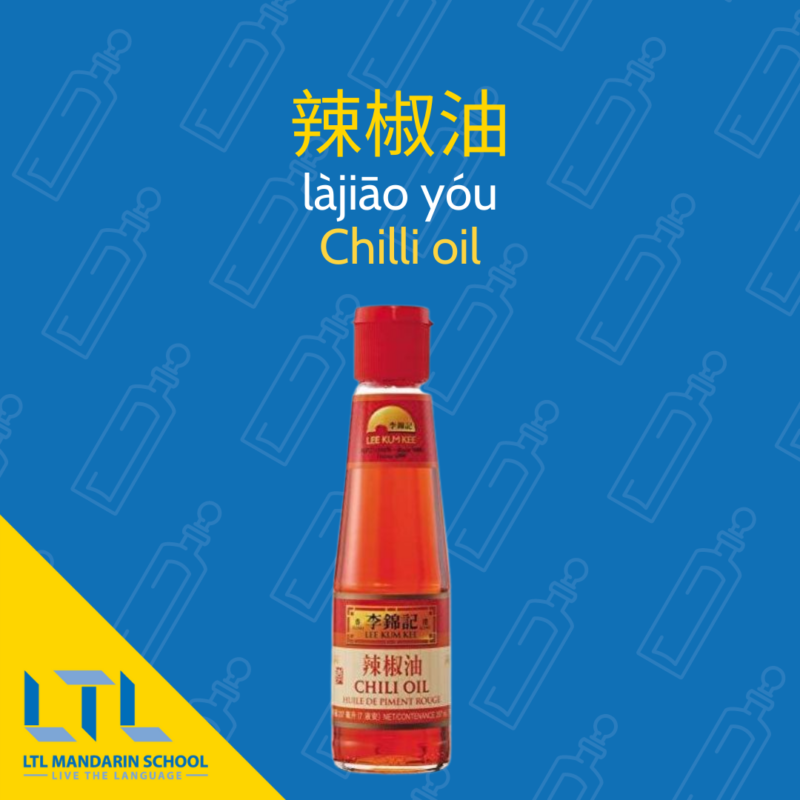
Earlier we already talked about various chilli oils/sauces so what the difference between those and this?
The main difference is that there are no chilli flakes or pieces of chilli in this one. Instead this is pure chilli infused oil, which makes it a great choice for dressings on cold dishes, noodles etc.
This chilli oil is easy to spot in the supermarket with its deep red colour. It is also referred to as “red chilli oil” (红辣椒油 hóng làjiāo yóu) for this reason.
Sichuan peppercorn oil 花椒油 huājiāo yóu
Next on our list we have Sichuan peppercorn oil. As you might guess from the name it is an oil infused with Sichuan peppercorns.
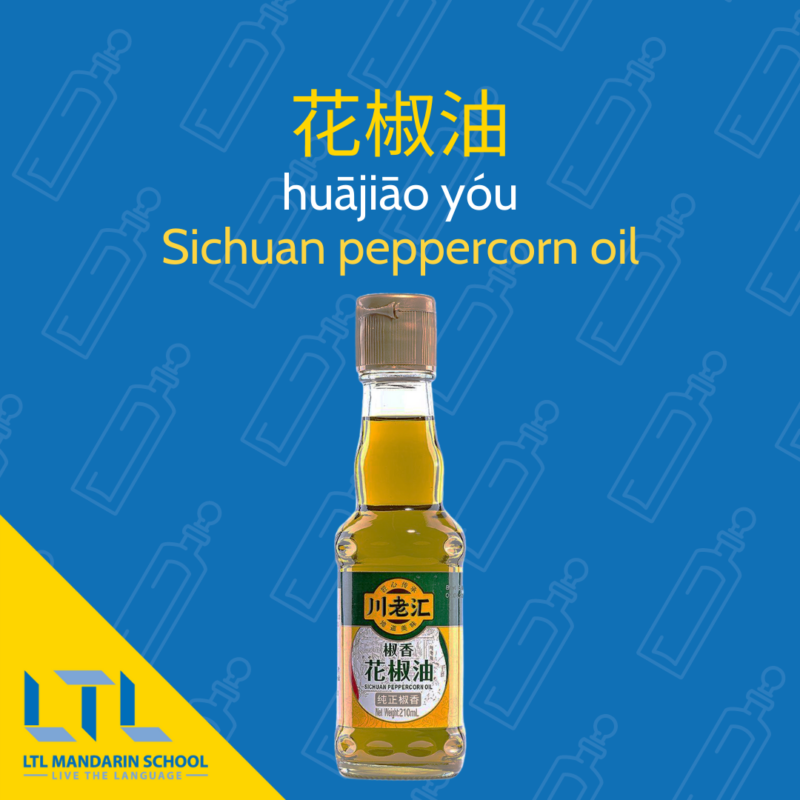
This gives the oil a distinctive 麻辣 málà “numbing and spicy” flavour that Sichuan is famous for.
If you’ve ever accidentally bitten into a Sichuan peppercorn then you’ll definitely understand what flavour we mean!
There are two varieties of this oil: red and green, with the colours referring to whether the oil was made with red Sichuan peppercorns (红花椒 hóng huājiāo) or green Sichuan peppercorns (青花椒 qīng huājiāo).
The green kind has a stronger flavour and aroma and will bring more of that numbing sensation to a dish.
The main use of this oil is to add a 麻辣 málà taste to a Sichuan dish. It can be used instead of actual Sichuan peppercorns which is great if you hate the sensation of accidentally biting into one! It’s also good if you don’t want the inconvenience of picking them out of a dish either.
Sesame oil 芝麻油 zhīmayóu
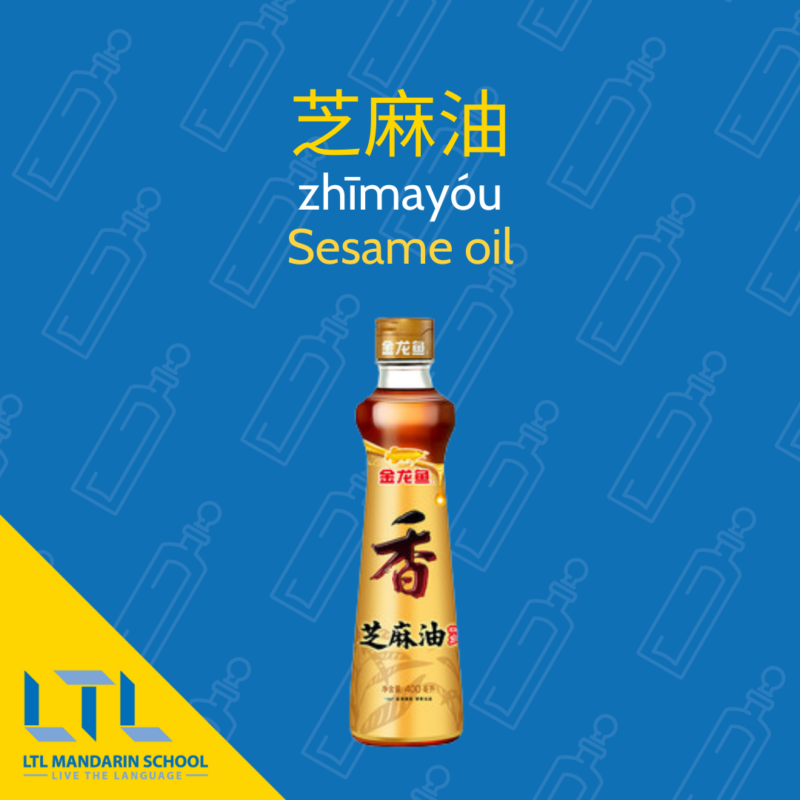
Sesame oil is another of the essential Chinese sauces and it is also one of our favourites on the list!
There are two kinds of sesame oil: toasted sesame oil and non toasted sesame oil.
Generally the one that is used in Chinese cooking is toasted sesame oil. Sometimes the name of it will include “香” xiāng meaning “fragrant” in the name to distinguish it.
Toasted sesame oil has a strong, nutty flavour and aroma.
Rather than it being used as a cooking oil it is instead used to season dishes. It is normally added in the last stages of cooking, as a marinade, in a dipping sauce or part of a dressing.
It’s very potent so you need to be careful when using it!

Chinese Dessert Soups to Get You Through the Winter Months 🍲
What exactly is Chinese dessert soup you ask? Which are the best for Winter? What are the best Chinese Dessert Soups. All is revealed here…
Chinese Sauces – Cooking Wines
Another essential type of Chinese sauces are cooking wines (料酒 liàojiǔ). There are two main varieties that are most commonly used in Chinese cooking.
Both are types of rice wine and are a key component of many Chinese dishes.
Shaoxing Wine 绍兴酒 shàoxīng jiǔ
The most common cooking wine used in Chinese cuisine is Shaoxing wine. This is a type of yellow rice wine 黄酒.
As you might guess from the name, it comes from Shaoxing in Zhejiang Province (浙江省 zhèjiāng shěng).
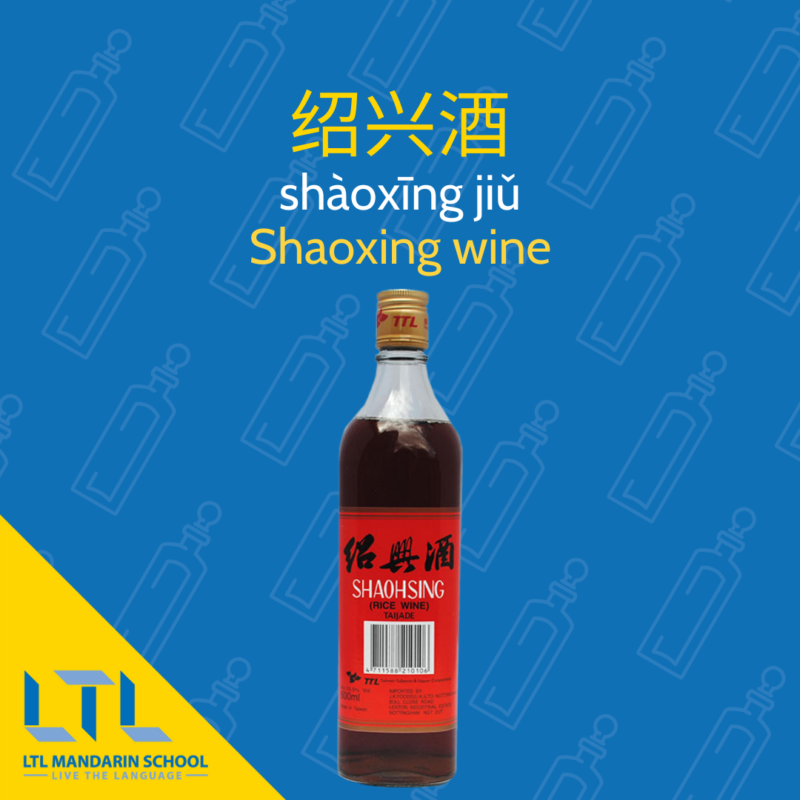
Shaoxing wine can be viewed as being similar to a dry cooking sherry and can be replaced with this if unavailable. The main use of Shaoxing wine is to add depth and flavour complexity to a dish.
It’s used in countless Chinese dishes, however it is a vital ingredient in any “red cooked” braised dishes such as red cooked pork (红烧肉 hóngshāoròu).
It is also vital in any “drunken” dish, like drunken chicken (醉鸡 zuìjī) where it is used as a marinade.
Clear white rice wine 米酒 mǐjiǔ
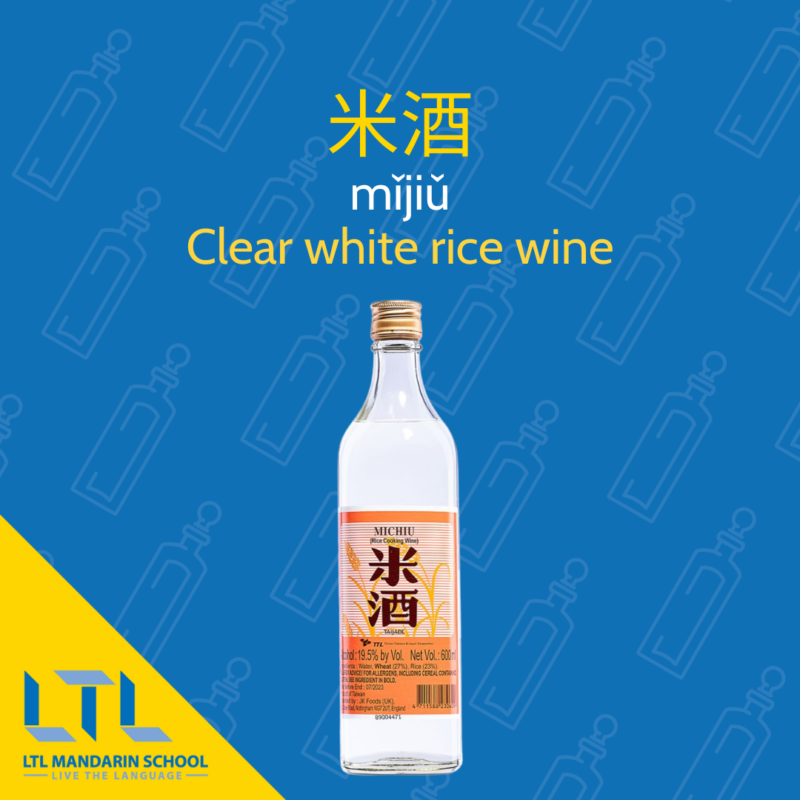
Clear white rice wine is the other type of Chinese cooking wine that is commonly used in Chinese cuisine.
It’s mainly used in South China and Taiwanese cuisines.
Unlike Shaoxing wine, where it is used for flavour, clear white rice wine is used to mask the odour or smell of meat and fish, but adds little flavour.
It has a much clearer and purer taste than Shaoxing wine and is best used in more delicate steamed dishes.
Chinese Sauces – Less Common Condiments
Lastly on our list of Chinese sauces, we have a couple of the less commonly used condiments that are mostly just used in a few specific dishes.
Chee hou sauce 柱侯酱 zhù hóu jiàng
Chee Hou Sauce, also sometimes called “chu hou paste”, is another one of the Chinese sauces that is used in Cantonese cuisine.
This is one of the less common Chinese sauces on our list, but can be seen as quite similar to hoisin sauce.
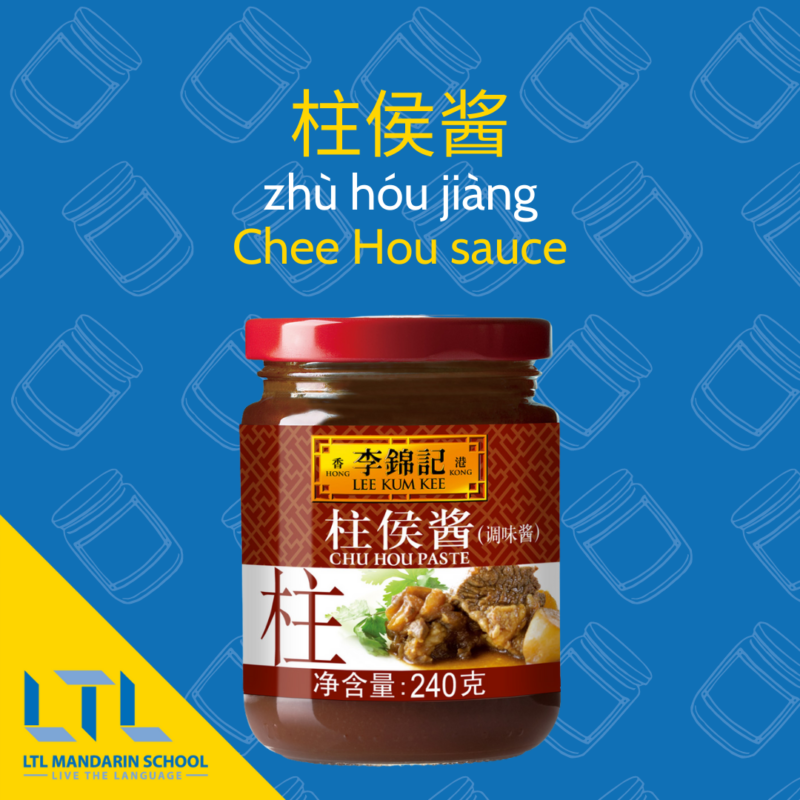
Like hoisin sauce it is made from fermented soybeans mixed with garlic, ginger, sesame, Chinese spices and some more unusual ingredients such as salted plums and salted lemons.
However, unlike hoisin sauce it isn’t used as a marinade or as a dipping sauce but instead it is designed for braising meats.
As chee hou sauce has a very specific usage and can be switched out for hoisin sauce if needed, this is not seen too often in Chinese supermarkets and most Chinese people won’t keep a jar as a staple in their home.
Shrimp sauce 虾酱 xiā jiàng
Last up we have shrimp sauce/paste, which does not sound like the most appetising of Chinese sauces.
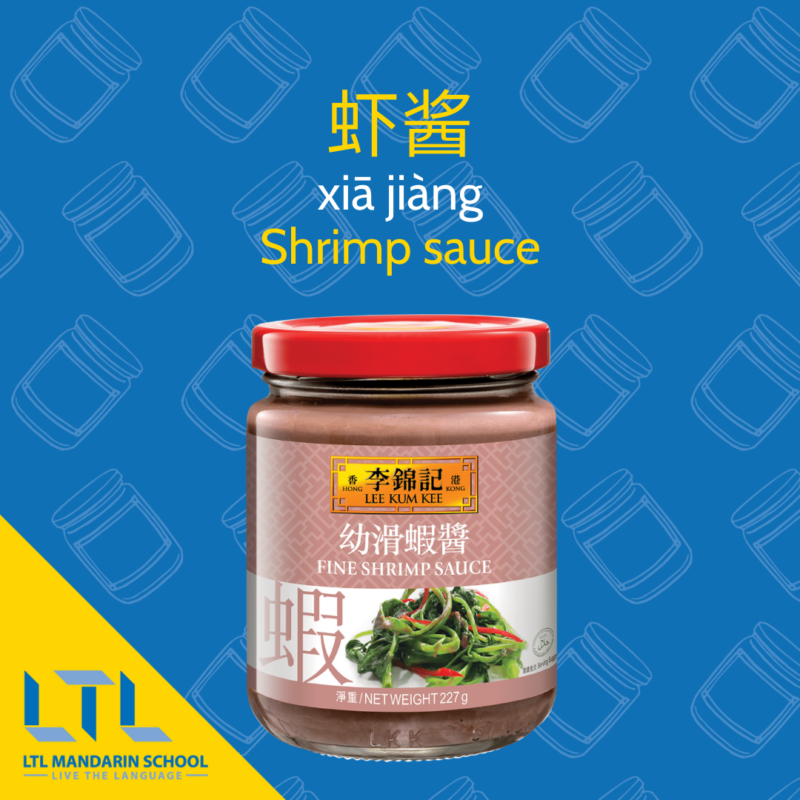
It is made from crushed or ground shrimp that is then salted and fermented.
It has a similar taste to fish sauce but has a stronger flavour and unsurprisingly a more shrimpy flavour.
Depending on the brand it can have more of a sauce like consistency or more of a paste like constancy. How salty and strong it is also varies brand to brand.
It is mainly used in Cantonese cuisine, especially in clay pot dishes (煲仔饭 bāo zǐ fàn) and for stir fried vegetable dishes like stir fried water spinach.
And there you have it! Which is your favourite? Tell us in the comments below.
Time to get cooking 👩🍳!
Chinese Sauces – FAQs
Are hoisin sauce and char siu sauce the same?
No they are not the same. Hoisin sauce is made from fermented soybeans mixed with garlic, chilli, sesame, Chinese spices and vinegar.
Char siu sauce is a condiment made from hoisin sauce, sugar, Chinese five spice powder, Chinese cooking wine, soy sauce, garlic and often also food colouring.
What’s the difference between light and dark soy sauce?
Light soy sauce is the generic soy sauce used in most Chinese recipes, its main use is to add flavour to dishes.
Dark soy sauce is darker, thicker and sweeter and is used more to add colour to dishes.
What sauce is used for Peking duck?
Traditionally Peking duck (or Beijing roast duck) is served with sweet bean sauce (甜面酱 tiánmiànjiàng).
However, many Chinese restaurants in the West will use hoisin sauce instead.
What is hoisin sauce made of?
Hoisin sauce is made from fermented soybeans mixed with garlic, chilli, sesame, Chinese spices and vinegar.
What is oyster sauce made of?
Oyster sauce is made from boiled oysters and also normally includes soy sauce, water, sugar, garlic and wheat flour for thickening.
What is the chilli oil in Chinese restaurants?
The chilli oil you find in Chinese restaurants will normally either be Guizhou style chilli oil, with the most famous being Lao Gan Ma, or Sichuan style chilli oil.
It’s a popular condiment used in lots of Chinese cooking.
Want more from LTL?
If you wish to hear more from LTL Mandarin School why not join our mailing list.
We give plenty of handy information on learning Chinese, useful apps to learn the language and everything going on at our LTL schools!
Sign up below and become part of our ever-growing community!
BONUS | Want to study the local dialect known as Shanghainese? We provide Shanghainese Classes in person and online.

 Hi, my name is Mojca. I am from Slovenia in Europe and I and I work as a student advisor at our Shanghai school.
Hi, my name is Mojca. I am from Slovenia in Europe and I and I work as a student advisor at our Shanghai school.





5 comments
[…] isn’t actually the condiment traditionally served with Beijing roast duck, check out our sauces blog to find out more about […]
In Lanham MD I woukd go and get a Kung Pao Chicken with a somewhat runny red sauce. It was a little spucy maybe more than a little.... I cannot find this sauce anywhere. I am no longer in that area but wow! That was my favorite dish! Any idea what it may be made of?
That's a super question, we'll need to do some research on that one Buck!
I'm looking for a Chinese condiment named Nongnongde Jiaxiangwei
农农的家香味 just means 'peasant family taste'. It could be anything.